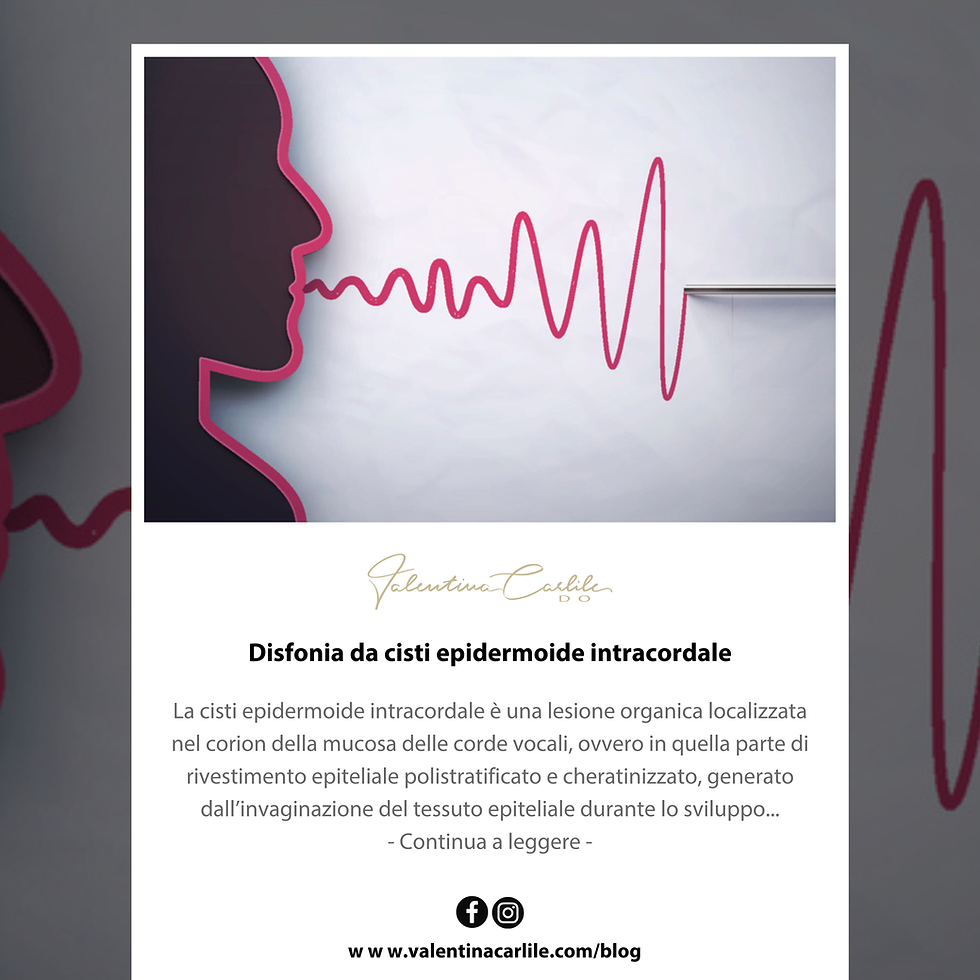SWALLOWING AND BREATHING
- Valentina Carlile DO

- May 31, 2021
- 2 min read

Speech, swallowing and breathing are functions that all occur in the aerodigestive tract. Its primary function, however, is to guarantee life through oxygenation. The phrenic nerve signals the diaphragm to contract, thus drawing air from the environment into the airways; air fills the alveolar sacs and capillaries extract CO2 from the blood and exchange it with O2. Special chemoreceptors located in cells of the carotid body, which is located near the bifurcation of the carotid artery in the thoracic cavity, serve to monitor oxygenation levels in the blood to signal to cardiopulmonary control centers in the brainstem when oxygenation is reduced. The additional need for oxygen occurs through increasing respiratory rate and volume, increasing heart rate, and suppressing competing activities such as speaking or swallowing. Thanks to this highly integrated organization of neural control over swallowing and breathing, it is virtually impossible to breathe and swallow at the same time. As soon as the pharyngeal phase of swallowing is initiated, central inhibition of the respiratory muscles is also initiated. This period is called "pre swallowing apnea", or apnea period. Swallowing generally occurs during the exhalation cycle. That is to say, in preparation for swallowing, breathing stops after exhaling a little. At this point we swallow while holding our breath (apnea period) for something less than a second, and when the bolus has made its way safely into the esophagus, the exhalation cycle can then be completed (Hardemark Cedborg et al., 2010 ; Martin-Harris et al., 2005). This exhale-swallow-exhale pattern is safe for airway protection. Studies in a population with respiratory impairment have demonstrated that the need for oxygenation can interfere with safe breathing-swallowing patterns, placing patients at risk of aspiration (Edgar, 1994; Gross, Atwood, Ross et al., 2009). Predictors of penetration/aspiration are: rapid breathing, reduced iolaryngeal elevation, penetration after swallowing, and oxygen desaturation.
Research to date suggests that maximum airway protection occurs when:
exhalation occurs before and after swallowing
the larynx is maximally isolated from the pharynx during swallowing
the cough reflex at the laryngeal level is unchanged
Any problem that interferes with these protective conditions increases the risk of suffocation and aspiration.
The stimulation of the liquid receptors found on the mucosa of the supralaryngeal region will trigger the cough reflex, mediated by the sensitive fibers of the internal superior laryngeal nerve, and by a central generator that will distribute a series of muscle contractions. The diaphragm will suddenly contract, the vocal folds will suddenly adduct, and the expiratory muscles, particularly the internal and external obliques, will contract forcefully, thereby generating high subglottic pressure. The pressure will be further increased by a bronchial narrowing mediated by the vagus nerve, which will reduce the cross-sectional area, allowing greater shear forces to be generated. The effectiveness of the cough in expelling foreign materials depends on the amount of subglottic pressure that can be generated and how strongly the vocal folds can be adducted.





Comments